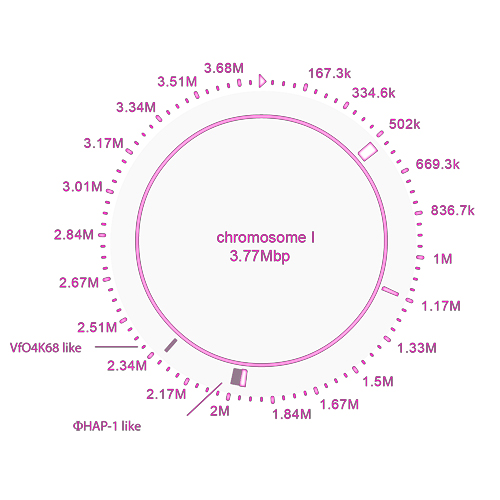Identification and Initial Characterization of Prophages in Vibrio campbellii
23-May-2016
PLoS ONE, 11(5): e0156010, doi:10.1371/journal.pone.0156010
PLoS ONE, online article
Phages are bacteria targeting viruses and represent the most abundant biological entities on earth. Marine environments are exceptionally rich in bacteriophages, harboring a total of 4x1030 viruses. Nevertheless, marine phages remain poorly characterized. Here we describe the identification of intact prophage sequences in the genome of the marine γ-proteobacterium Vibrio campbellii ATCC BAA-1116 (formerly known as V. harveyi ATCC BAA-1116), which presumably belong to the family of Myoviridae. One prophage was found on chromosome I and shows significant similarities to the previously identified phage ΦHAP-1. The second prophage region is located on chromosome II and is related to Vibrio phage kappa. Exposure of V. campbellii to mitomycin C induced the lytic cycle of two morphologically distinct phages and, as expected, extracellular DNA from induced cultures was found to be specifically enriched for the sequences previously identified as prophage regions. Heat stress (50°C, 30 min) was also found to induce phage release in V. campbellii. Notably, promoter activity of two representative phage genes indicated heterogeneous phage induction within the population.











